#nyoirin kannon
Text
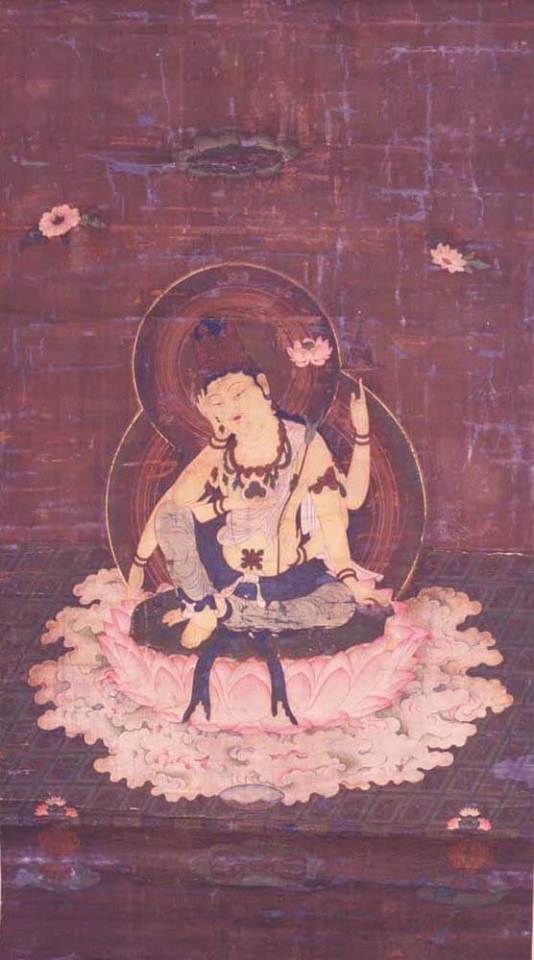
A painted image of Nyoirin Kannon Bodhisattva (如意輪観音菩薩) dating to the Kamakura period (1185-1333) at Hōzanji Temple (宝山寺) in Ikoma, Nara Prefecture
Image from the city's digital museum
#japanese art#buddhist art#如意輪観音菩薩#如意輪観音#nyoirin kannon#観音菩薩#観音#kannon#avalokitesvara#奈良県#nara prefecture#生駒市#ikoma#宝山寺#hozanji#真言律宗#shingon ritsu#arte japonés#arte budista
56 notes
·
View notes
Text

Nyoirin Kannon, Todai-ji
Nara, Japan
#nyoirin kannon#todaiji#todai-ji#nara#japan#asia#travel#travelling#sculpture#statue#temple#my photos
1 note
·
View note
Text
Sendai Daikannon statue, located in Sendai, Japan.


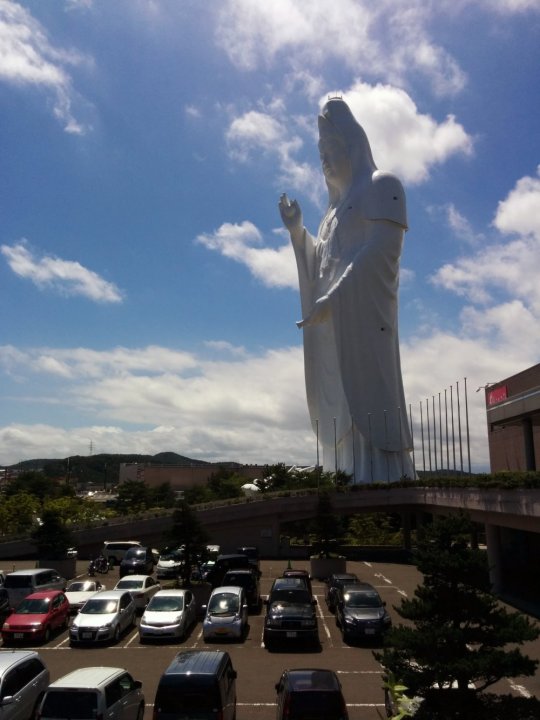


1 note
·
View note
Photo

The Bodhisattva Nyoirin Kannon, 14th century
Ryōzen
Nanbokuchō period, Japan
Ink and light color on silk
The deity Nyoirin Kannon sits atop a boulder on a verdant mountainside, his eyes downcast in silent contemplation. Nyoirin Kannon is said to fulfill people’s every wish and is depicted here pondering how to save humanity. The spot his left hand touches gleams golden. In the sutras, which explain the teachings of Buddhist deities, it is written that Nyoirin Kannon touches the “shining mountain,” Mount Potalaka. This painting alludes to that detail by depicting him touching a gleaming golden rock. The artist is Ryōzen, who was active in the vicinity of Tōfuku-ji Zen Temple in Kyoto during the 14th century. The painting bears Ryōzen’s signature in its bottom-right corner. No details about Ryōzen are known, but it is rare for the name of the artist of a 14th-century work to survive, making this a valuable example. This is an ink wash painting. The artist portrays a space with depth through the use of different shades of ink. The use of gold causes Nyoirin Kannon to stand out against the black ink used for the majority of the painting. Details such as the deity’s diadem, accessories, the pattern on his robe, and the veins on the leaves of the lotus throne on which he sits are delicately portrayed using gold paint made from a gold-powder base. Similar uses of gold paint are often seen in traditional paintings of Buddhist deities. In this painting, the gold-painted sections appear especially vivid amid the varied shades of black ink.
Collection of the Tokyo National Museum
#nyoirin#kannon#Avalokitesvara#nanbokucho period#Japanese#painting#Ryozen#art#art history#14th century#tokyo national museum#gilding#gold#buddhism#bodhisattva#iconography#cintamani#cintamanicakra
1 note
·
View note
Photo

Nyoirin Kannon, late 13th-early 14th century, Japan
264 notes
·
View notes
Text
I Want To Meet Buddha
Evening
NHK "Shumi Dok! Kanto Ai ni Ikitai Buddha-sama"
I got to go on the show🍀
I'm thankful for this wonderful opportunity🍀
Touching Buddha statues,
isn't really something I've done before but,
Thanks to Wada-san and the teacher with their lots of knowledge, I think it was the most enjoyable for viewers……😳
The difference in expressions, the differences in eras,
I didn't know there were so many!
Although its still shallow,
my interest really really deepened in 1 day,
Actually a few days after the shoot,
Wada-san had recommended,
so I went to visit the hidden Buddha Nyoirin Kannon at Gokokuji temple!
On the day of the reveal of the thoroughly hidden Buddha!
It was really brilliant and beautiful😌✨️
Instagram 💙
From 10:30PM~<
there is a special show on Space Shower TV!!
I'm sure that,
Morning Musume '23,
will convey our love for Morning Musume,
I think🥹❤️
Since Nonaka Miki-chan had to take a break during this time, she is absent from the show
It had been a while since being fired up for an intro quiz…… lol
Please enjoy!
see you ayumin <3
3 notes
·
View notes
Text
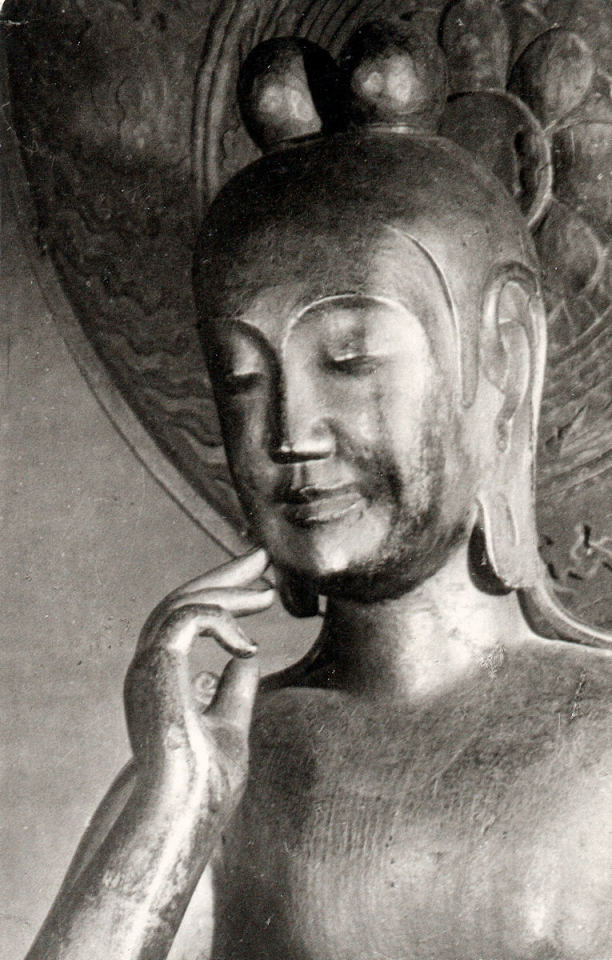
Nyoirin Kannon, Chuguji, Japan - 1960s postcard of a 7th century sculpture.
Below: a more recent image showing the colouring which is either the camphor wood it's carved from, or a product of centuries of smoke from incense and candles (it was originally painted white)
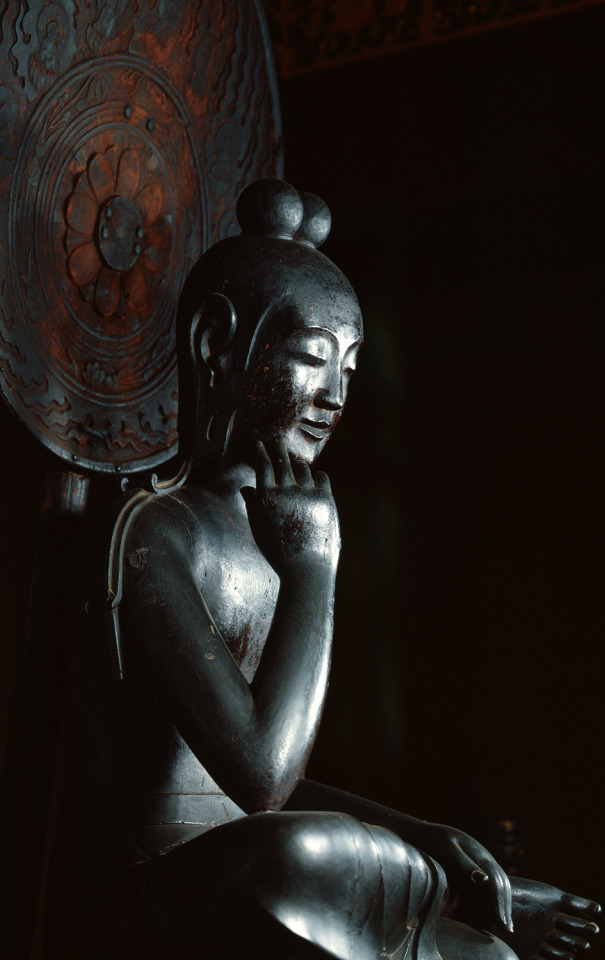
11 notes
·
View notes
Text
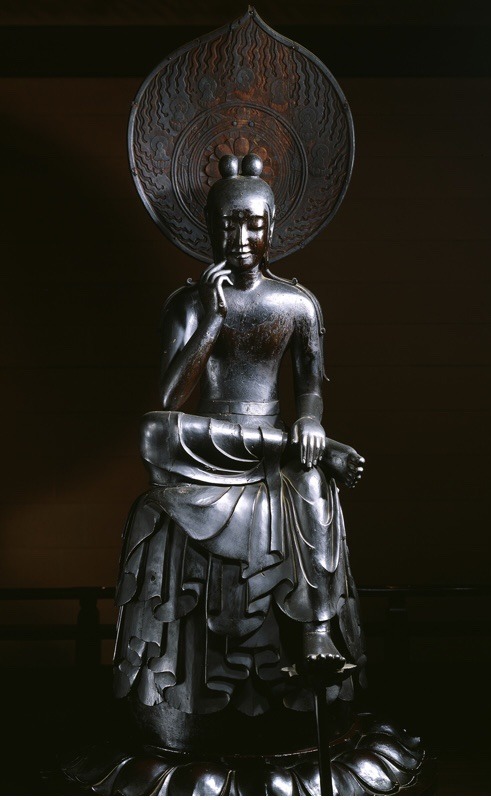


« […] la Nyoirin Kannon de bois conservée au Chûgûji de Nara, une des plus hautes figures de méditation qui soient jamais sorties de la main des hommes. »
René Grousset - Bilan de l’Histoire
5 notes
·
View notes
Text
0 notes
Text
it's january 3rd and i have not finished a single kisuke but what i DO have is:

a hime cut, for some reason (that was supposed to be a warmup sketch but u will notice there is ink. Do Not Ask)

a desperate reckoning with the six arms of Nyoirin Kannon statues and my phone’s horrible camera (at about which time i realized the pose i have in mind has far outstripped my abilities. also i couldn’t draw the hougyoku so it’s a d20)
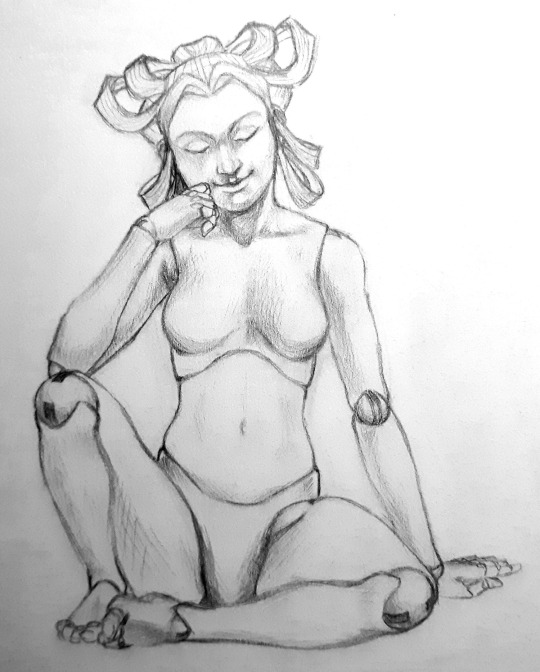
this sick ass benihime i looked up so many pictures of bjds for (and that i drew on the back of another drawing and didn’t mean to render. “it was only supposed to be a quick sketch" my old nemesis. my beloathed. worstie i did not miss u)
and
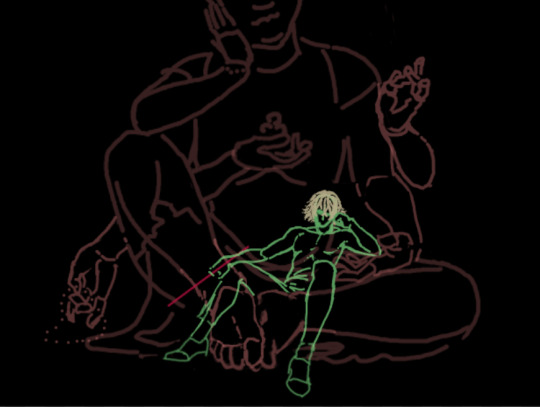

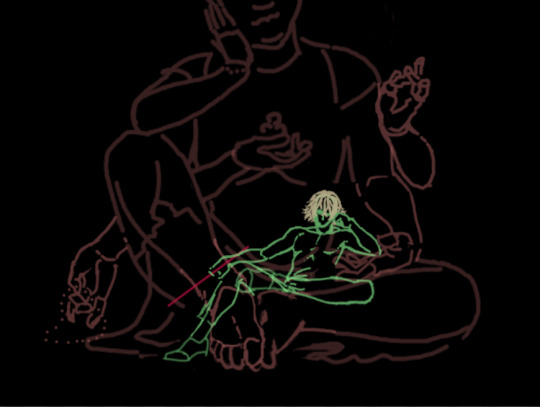
appx. half a kisuke and a composition mockup i spent WAY too long on considering i’m not actually going to draw it digitally, but at least i can rearrange his legs without erasing holes in the paper
edit: WAIT
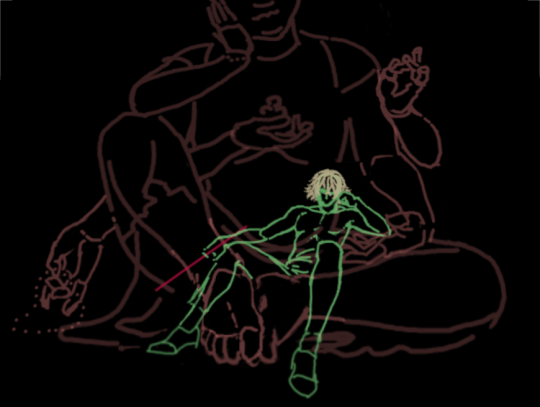
ooh ahh perspective......
#listen ok#listen.#rendering his chest with a 1.16px brush was just. really important. for four hours#pls ignore that he has shoes i used up all my knowledge of foot anatomy on the statue's feet and had none to spare for his#spent all that time putting his legs on separate layers to move them around and i think i'm going w/the first pose anyway lol#did a faceless sketch with all the detail of a crash test dummy need hair that fluffy. no.#but by god i have 2 hands and the unerring if unaimable laser focus of semi-medicated adhd#my art
1 note
·
View note
Text

A sculpted image of Nyoirin Kannon Bodhisattva (如意輪観音菩薩) dating to the 9th century at Kanshinji Temple (観心寺) in Osaka
Una imagen esculpida del Bodhisattva Nyoirin Kannon (如意輪観音菩薩) que data del siglo IX en el templo Kanshinji (観心寺) en la ciudad de Osaka
Image from Image from "貞観彫刻 (日本の美術7)" [Jōgan Sculpture (The Arts of Japan 7] by 倉田文作 [Kurata Bunsaku], published by 小学館 [Shōgakukan], 1971, page 96
#japanese art#buddhist art#arte budista#arte japonés#如意輪観音菩薩#如意輪観音#nyoirin kannon#観音菩薩#観音#kannon#avalokitesvara#大阪市#osaka#観心寺#kanshinji#真言宗#shingon
31 notes
·
View notes
Note
For the reading!
First name: Chelci
Last initial: W
Two traits: 1. I have black shoulder length hair. 2. I have a birthmark shaped like the state Texas.
For my question I would like to know if two people/entities,
1. I 👹
2. JM 💉
were me in a past life if possible. It's kind of dumb but I constantly go back to this and I just wanted to know if I was right or if maybe it's me just having a strong interest in the two and just projecting something that's not there.
If it's not possible please don't feel like you have to answer. Thank you so much and I hope you have a wonderful day 😊.
Also, sorry for the initials, I just felt it would be better that way especially for the second one.
Hi Chelci!
Let's see...
For you, I was drawn to my Esoteric Buddhism of Japan Oracle Deck, and I picked: Nyoirin Kanjizai Bosatsu!
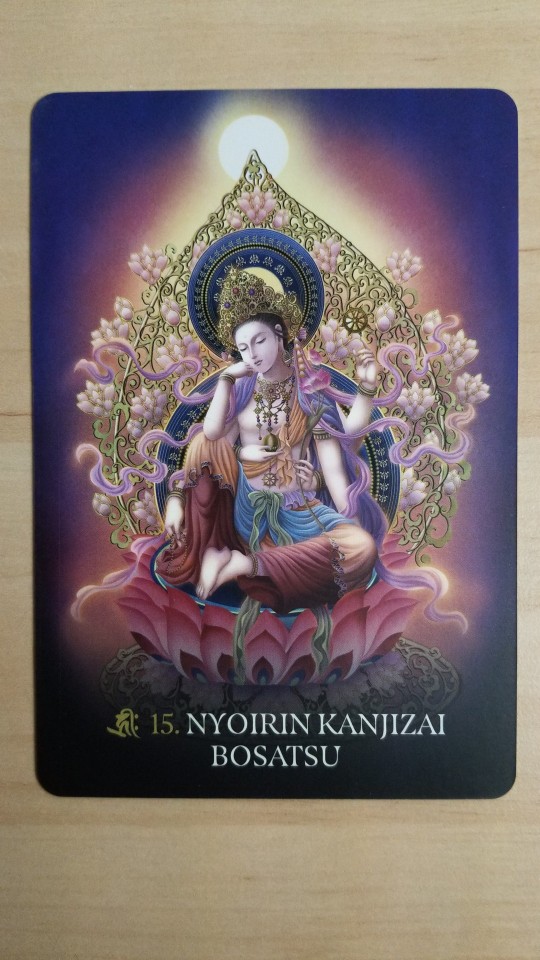
To quote my book: "[She] is one of the Six Kannon, savior to those wandering lost in the god realm. In Esoteric Buddhism, she has six arms and sits with her right knee up as the savior of the Six Realms of Rebirth."
She has many meanings, but they can largely be boiled down to this: granting ones' hopes, and inner reflection.
In your case... You are struggling with discerning between the truth and your own desires. This is not an easy task... And sometimes it is not easy to get a clear answer.
But this card, and the message I am receiving, is telling you to look for your "sincerest desires: feelings that bubble up from deep in your soul, that make your heart feel joyful and light." When it comes to discerning fact from fiction, this kind of feeling is almost always a guaranteed answer. So spend some time analyzing these thoughts and memories... And if you have this feeling well up, from deep, deep within, then you know that it is true.
Thanks for the ask! Past-life stuff is always very tricky. I hope this resonates!
Blessings!
1 note
·
View note
Photo

Nyoirin Kannon Bosatsu
9th Century, Heian period
Kanshinji Temple, Osaka.
#bodhisattva#buddha#buddhism#buddhist#art#history#japan#japanese#archaeology#schulpture#religion#religious#mikkyo#nyoirin kannon#osaka#kanshinji#temple
154 notes
·
View notes
Photo

Nyoirin Kannon (Cintāmaṇicakra), 14th century
Kamakura period, Japan
Hanging scroll; ink and colors on silk
H 87.5, W 46.2
Collection of the Nara National Museum
#cintamani#nyoirin#kannon#cintamanicakra#Avalokitesvara#Buddhism#figure#iconography#14th century#kamakura period#Japanese#Nara National Museum#painting#art#art history
0 notes
Photo
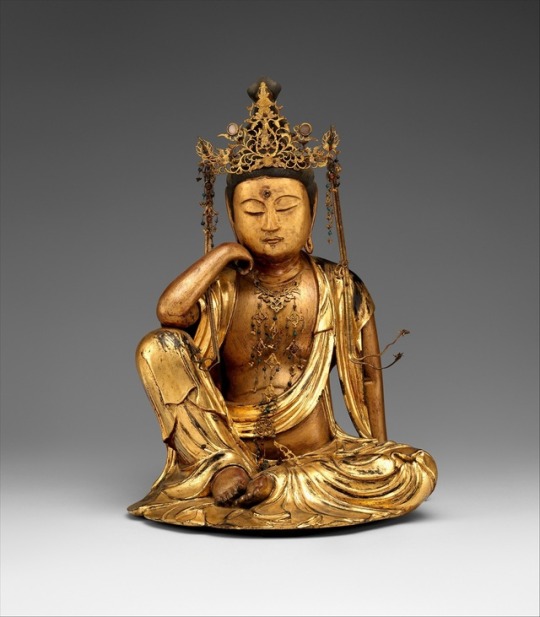

如意輪観音坐像 Nyoirin Kannon
Period:: Edo period (1615–1868)
dated 1693
Culture: Japan
Medium: Wood with gold, gold leaf, lacquer,and crystal inlay
Dimensions: H. 16 9/16 in. (42.1 cm); W. 12 1/8 in. (30.8 cm); D. 10 1/4 in.
Credit Line: Rogers Fund, 1956
Accession Number: 56.39, Metropolitan Museum of Art
The bodhisattva Kannon (Sanskrit: Avalokiteshvara) is represented here with Esoteric Buddhist attributes: the wish-fulfilling jewel (nyoi hōju) and the wheel (rin) of Buddhist teachings. Carved into the base are female donors’ names; this votive offering to a temple may have been in connection with the monthly jūkuya-kō ritual for the health and safe delivery of children
#Buddhism#Buddha#The Bodhisattva Kannon#Art#Art History#Religion#Spirituality#Japan#Japanese#Nyoirin Kannon#Edo Period#Museum
217 notes
·
View notes
